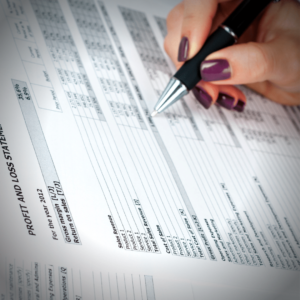A consistent Period End Review process is an essential component to a restaurant’s financial success. Period End Reviews allow operators to review metrics and identify areas of opportunity with audits and benchmarks. Operators who have a true understanding of their fiscal health enable themselves the ability to make proactive business decisions, improve their restaurant’s operational efficiency, and ultimately, their profitability.
In this episode of The Tip Share, RASI New Business Strategist, Dave Downs takes a moment to sit down with RASI Squad Leads and seasoned accountants, Dave Holzer and Jesse Brown, to provide insight and expertise on the top 5 areas of focus to keep the upcoming period goal-oriented, based on current results.
5 Must-Assess Areas For a Successful Restaurant Period End Review
There are 5 main areas where restaurants should place their focus at the close of a period:
- COGS: Your food and pour cost
- Labor: Your payroll
- Expenses: Items below-the-line (items on the P&L that do not directly impact profit)
- Analysis: Specific categorical focuses (Balance Sheet etc.)
- Reconciliation: Determining where items are coded, what items need further review, and what adjustments you need to make
“COGS, Labor, Expenses, Analysis, Reconciliation: CLEAR – If you want to get a CLEAR financial picture, it’s imperative to review these areas at the end of each period!”
Considerations When Evaluating COGS & Labor At Period End
Cost of Goods (or to some, Cost Of Sales) is defined as the carrying value of goods sold during a particular period. In a restaurant, COGS is where the managers can make the most impact. It’s also where the day-to-day focus is often driven. When analyzing COGS you’re looking at your big-ticket items – anything that’s significant in getting food to the customer. It’s critical to the health and survival of all restaurants that you understand your COGS and how to manage them accurately.
 In addition to reviewing COGS at the end of a period, operators need to review their Labor expenses as well. Restaurants are among the most labor-intensive industries and labor is one of the largest line items on your Balance Sheet. Keeping control of labor expenses can be one of the best ways to increase profit and contribute to the success of your business.
In addition to reviewing COGS at the end of a period, operators need to review their Labor expenses as well. Restaurants are among the most labor-intensive industries and labor is one of the largest line items on your Balance Sheet. Keeping control of labor expenses can be one of the best ways to increase profit and contribute to the success of your business.
When reviewing COGS & Labor, best practices include:
- Review Period Trends: Analyze the last 3 periods, look at your overall food and labor costs, and see if you can identify any trends.
- Review Historical Trends: Analyze YOY trends to highlight areas of opportunity. Ex) is there an opportunity for vendor price negotiations or product discounts?
Furthermore, it’s critical to understand what was taking place at the time of your trend comparisons. This will help paint the picture in the long run so you can understand if you’re comparing apples to apples, or apples to oranges.
The best way to alleviate any outliers is to always look at your trends in the scope of a Budget Versus Actual in the Period End Review, and even more frequently throughout the course of each week so that every analysis is tied directly back to your Budget.
Dissecting Below-The-Line Costs On The P&L
 It’s crucial for the financial health of all restaurants that those who are making scheduling decisions, buying decisions, etc., fully comprehend how to read an income statement. It’s equally as important that they utilize the knowledge behind what goes into the P&L to make better business choices.
It’s crucial for the financial health of all restaurants that those who are making scheduling decisions, buying decisions, etc., fully comprehend how to read an income statement. It’s equally as important that they utilize the knowledge behind what goes into the P&L to make better business choices.
Below-the-line expenses are often overlooked by operators. This is a huge detriment to the business. There are many hidden items below-the-line that can make a large difference if analyzed consistently, and shed a bright light on areas of opportunity to lower costs.
Here are a few examples:
- Supply Costs
- Rent
- Repair & Maintenance
Useful Tips To Review A Restaurant Comp Analysis
Every restaurant’s accountant should have a standard set of GL’s (general Ledger accounts) where comps can be separated out into more detail. This provides a more transparent picture of why or when certain items are getting comped.
This can range anywhere from the following:
- Employee Discount
- Alcohol Employee Discount
- VIP Promo
- Alcohol VIP promo
Analyzing your comps more granularly sets you up for greater success in the bigger picture. This is especially applicable in relation to compliance and tax implications (use tax etc.).
WATCH THE FULL VIDEO BELOW:
Top 3 Items On The Balance Sheet That A Restaurant Owner Should Analyze During A Period End Review
The Balance Sheet is often the statement that gets overlooked; it’s not your income, it’s not your COGS, it’s simply not as entertaining to look at. However, the reality is that a restaurant Balance Sheet is the most important financial statement an operator has. If the Balance Sheet is not accurate, then the P&L is inaccurate as well. Therefore, there is no true clear picture of where your actual Net Profit lies.
The main accounts you need to review include:
- Petty Cash: Every restaurant calls this something different (safe, petty, banks, house bank). Petty cash represents the amount of cash you have in your restaurant, NOT including your cash collected for that day’s deposits. You need to have daily or shift-ly counts of this amount to ensure accountability, prevent fraud and inaccurate accounting.
- Credit Card Tips Payable: If you’re paying out Credit Card tips collected on paychecks, then the total amount of tips collected for that pay period will show as a credit balance in your liabilities. At the time of processing payroll, that total amount collected should then be paid out in full to your employees. If you have any remaining balance, this means you have either under or overpaid tips to employees. This is a red flag during audits. It’s critical to reconcile CC Tips Payable to the penny with every payroll.
- Operating Equipment: If you have a large expense, like a new piece of kitchen equipment, your CPA may suggest you treat this as a capitalized cost and record it as a long-term asset on your Balance Sheet. This means the expense does not hit your P&L statement as an expense within the same period that you purchased it. Set up a depreciation schedule to incur the expense spread out over future periods.
Why Bank Reconciliations Are Critical To A Period End Review
 If you can’t verify that the information you have is accurate, there’s no point in reviewing the information in the first place. This is where reconciliations come into play. When reconciling accounts, this needs to go beyond the Operating Accounts. Your bank reconciliation can be thought of as your grade. Use the number of reconciliation questions you have as a learning tool to understand where your areas of opportunity lie.
If you can’t verify that the information you have is accurate, there’s no point in reviewing the information in the first place. This is where reconciliations come into play. When reconciling accounts, this needs to go beyond the Operating Accounts. Your bank reconciliation can be thought of as your grade. Use the number of reconciliation questions you have as a learning tool to understand where your areas of opportunity lie.
A few areas to reconcile are the following:
- Ensure cash paid-outs are recorded properly
- Verify expenses paid via credit card are recorded correctly
- Confirm loan balances are accurate
Reconciling and reviewing your financial statements at the end of every period ensures your finger is on the financial pulse of your business. It allows you to identify any accounts that need adjusting and make said adjustments to your financials; ultimately, this enables you to pivot when needed!
LISTEN TO THE FULL PODCAST EPISODE BELOW!!







